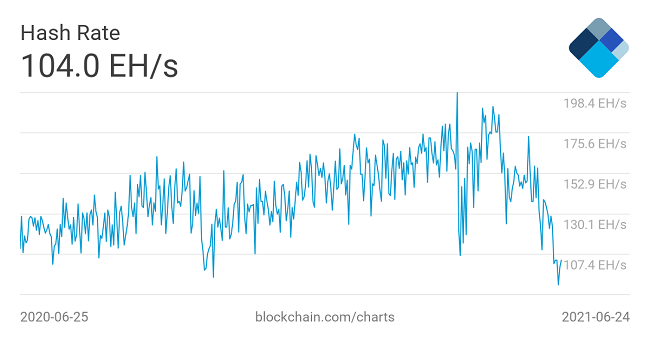
The hash rate is one of the most important concepts in bitcoin mining, surely this has been one of the first definitions that you have come across when you have investigated a little more about the mining process.
What is the hash rate and how does it influence bitcoin mining? The hash rate is the mining power that is available to process data and find the solution to the mathematical problems that keep cryptocurrencies encrypted. Thus, the hash rate refers to the speed or time it takes a miner to do the mathematical calculations to solve blocks within the blockchain.
The hash rate is essential, as it has a great influence on the security and sustainability of the Bitcoin network. Likewise, the miners’ earnings depend on the hash rate, since the higher the power, the more blocks are mined.
How do you get a good hash rate?
To achieve a good hash rate you need specialized hardware, also known as mining hardware, capable of solving hashes, that is, capable of solving complex mathematical problems. These mathematical problems must be solved through the POW (Proof of Work) protocol and the SHA 256 algorithm, which is the one used in the Bitcoin network. The speed to solve hashes is measured in units per second in megas, gigas, teras or petas as follows:
- 1 Hash
- 1 Kilo Hash = 1000 Hashes
- 1 Mega Hash = 1000 Kilo Hashes
- 1 Giga Hash = 1000 Mega Hashes
- 1 Tera Hash = 1000 Giga Hashes
- 1 Peta Hash = 1000 Tera Hashes
So, to know how good a computer’s mining power is, the miner must ask himself, how many hashes can my mining rig solve per second? From this point of view, the hash rate helps you establish the power of your mining equipment.
The Bitcoin blockchain is made up of hundreds of thousands of miners with different capacities, who due to the mining difficulty need to use increasingly powerful mining equipment. By adding the power of each of their computers to a large pool, a higher processing power is achieved in the network that allows them, as a team, to solve bitcoin hashes much faster.
This association of users who contribute their machines to add their power and thus solve the blocks more quickly and get the reward together is known as a mining pool. In this way, to know how good your mining power is, you need to take into consideration not only the power of your mining rig, but also the power of the mining pool to which you belong, because your chances of obtaining more or less bitcoins depend on both factors.

Importance of the hash rate in Bitcoin mining
The hash rate not only helps us measure our ability to mine bitcoins and make a profit, it also serves to establish the power of the Bitcoin network and, with it, its security. This is because the higher the hash rate of a blockchain network, the greater its resistance to attacks, because to attack successfully it is necessary to have a higher computing power that can affect it.
So how can you find out the hash rate of the network? Adding up the mining power of all miners that make up the Bitcoin blockchain. This calculation is made as an estimate based on the number of blocks mined and the mining difficulty on the network, since it is not possible to know exactly the mining power of Bitcoin.
Thus, at present, it is estimated that the Bitcoin network has a global hash rate that amounts to 104.00 EH/s.
Now, the hash rate is also used to calculate the mining difficulty. The mining difficulty for bitcoin is recalculated every 2016 mined blocks, so that it is possible to mine a block every 10 minutes. This readjustment occurs automatically approximately every two weeks.
This readjustment happens because the processing power in the Bitcoin mining network increases each time a new miner joins it. As a consequence, the global hash rate of Bitcoin increases as does its speed to mine blocks. But let’s remember that according to Bitcoin protocols, only one block should be mined every 10 minutes.
Therefore, the mining difficulty increases when there are more miners on the network (and more hash rate power) and decreases when there are fewer miners on the network (and less hash rate power) to keep the mining rate of 1 block. of transactions every 10 minutes.
This defined adjustment in the Bitcoin algorithm is done every 2 week.






